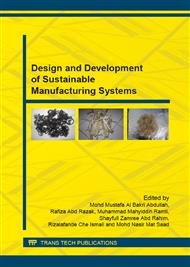p.193
p.198
p.203
p.212
p.216
p.221
p.229
p.234
p.238
The Effect of Different Reduction Methods on Conductivity of Reduced-Graphene Oxide (r-GO)
Abstract:
Large quantity of graphene oxide (GO) was prepared by Modified Hummer’s method, in which graphite was treated with a mixture of sulphuric acid, potassium permanganate and hydrogen peroxide. A chemically reduced graphene oxide (r-GO) was prepared using sodium borohydride (NaBH4), followed by thermal treatment and thermal treatment of chemically reduce using NaBH4. The electrical resistance of r-GO was measured using Keithley sourcemeter. The results revealed that r-GO show lower resistance on thermal reduction which is 2.39 kΩ compared to chemical reduction and thermal of NaBH4 reduction which is 2.18 MΩ and 3.16 kΩ respectively. It can be concluded that thermal reduction is the best method to produce high conductivity r-GO film.
Info:
Periodical:
Pages:
216-220
Citation:
Online since:
November 2015
Authors:
Price:
Сopyright:
© 2015 Trans Tech Publications Ltd. All Rights Reserved
Share:
Citation:


